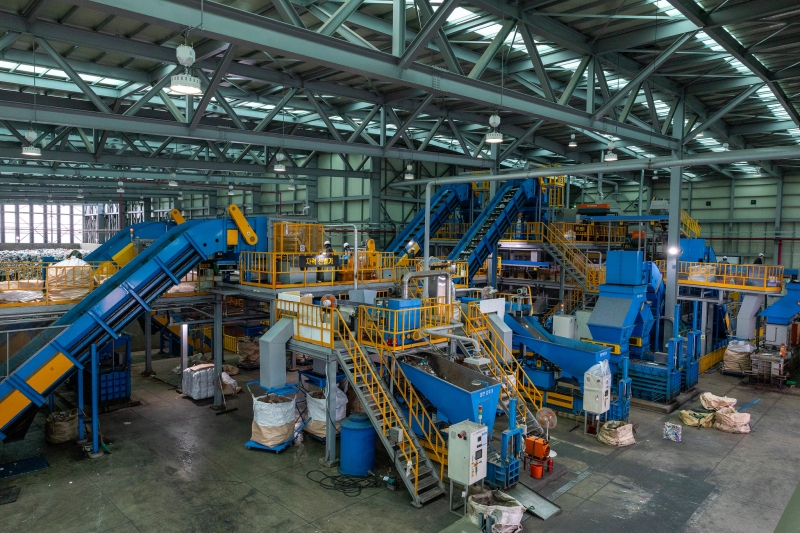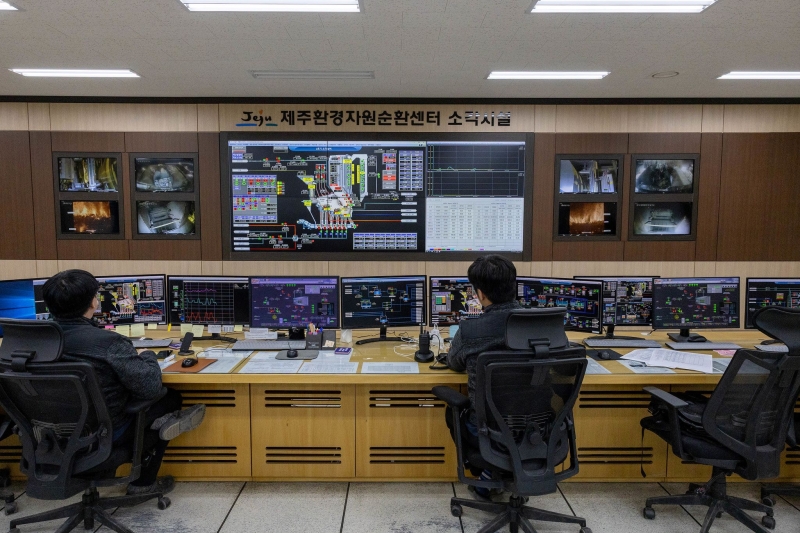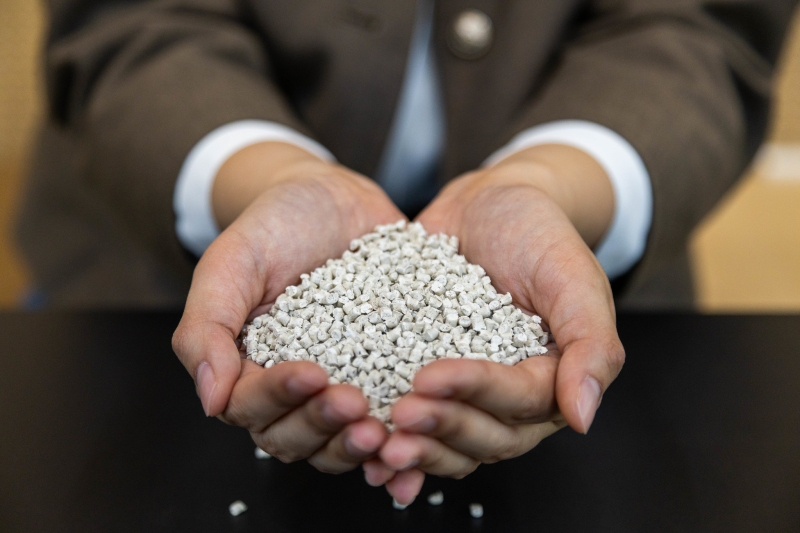Jeju province has built 1,700 unstaffed drop-off depots, known as Clean Houses, where nearby residents must drop off their recycling on designated days. The province also has 200 staffed facilities where employees, often retirees, help residents divvy up their waste. This initial sorting makes recycling easier down the line.
In Jeju, some 66 per cent of all household waste, which includes plastic, paper, food and other municipal waste, is recycled, according to data from the Korean environment ministry. The global average is about 19 per cent, found a 2024 report by the United Nations Environment Programme (UNEP).

Jeju Resources Circulation Center is part of an ambitious effort to end plastic pollution in the province. Credit: UNEP
Jeju is also home to a cutting-edge recycling plant. The Jeju Resources Circulation Center is largely automated, with magnets separating metals from plastics and so-called optical sorters using light rays to determine the composition of plastics, allowing them to be grouped by type.

Staff monitor operations at the Jeju Resources Circulation Center from the control room. Credit: UNEP
The plant processes 60 tonnes of plastic waste per day, reselling much of it to local businesses, say Jeju officials. This revenue stream contributes to covering the cost of building and operating the centre.
“I believe this facility is not just necessary for environmental reasons but also economically very valuable,” says Geunsik Chung, head of Jeju Province’s Resource Circulation Division.

Light-colored plastic pellets held in cupped hands. Credit: UNEP
Businesses across the country have embraced recycled plastic coming from places like the Jeju Resources Circulation Center.
.jpg)
These reading lamps are among the products Lowlit Studio makes using post-consumer plastic. Credit: UNEP
That includes the Lowlit Collective, a design firm in Seoul. Fabricators use post-consumer plastics to create an array of home goods, from tables to chairs to reading lights. Many are designed to last for decades.
“Plastic is a very useful material but the problem is how we use it,” says Jaesik Choi, head of the collective. “We are so used to throwing things away, but design can reverse that paradigm. I believe in extending the lifetime of plastic products, and making things people can keep, fix and pass on to the next generation.”
UNEP’s work is made possible by flexible contributions from Member States and other partners to the Environment Fund and UNEP Climate, Nature and Pollution funds. These funds enable agile, innovative solutions to climate change, nature and biodiversity loss, and pollution and waste. Learn how to support UNEP to invest in people and planet.
About World Environment Day
World Environment Day on 5 June is the biggest international day for the environment. Led by UNEP and held annually since 1973, the event has grown to be the largest global platform for environmental outreach, with millions of people from across the world engaging to protect the planet. This year, World Environment Day joins the UNEP-led #BeatPlasticPollution campaign to end plastic pollution.
Since 2018, the UNEP-led #BeatPlasticPollution campaign has advocated for a just, collective, and global transition to a world free of plastic pollution.
